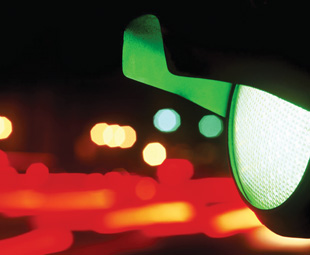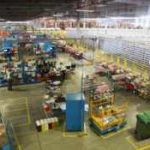Mixed signals

As winter passes, GAVIN MYERS finds the impending arrival of his favourite season spoiled by failing infrastructure.
If you’re not from Johannesburg, our winters are dry, dusty and, at night, downright freezing. To those in some parts of the world our winter weather might be considered a heat wave, but I’m not a fan and would rather stay in bed. At least the robots work, though. Some might call them traffic lights, but in Joburg we have robots!
Following a couple of weeks of beautiful summer-esque weather leading out of winter, Johannesburg had its first rains of the season right in line with the beginning of spring. For about three or four days, the forecast was overcast and rainy. Very rainy. At one stage on a Thursday afternoon it got so dark you’d have thought the Mayan’s predictions were coming true early.
Naturally, chaos befell Joburg’s already chaotic roads over those few days, and a few thereafter. In one wet morning trip to the office, I passed four accidents and, throughout those few days, heard countless accident reports – many of them involving trucks on the metropolis’s busy highways. That said, I did happen to drive the N1 south between 14th Avenue and the new N17 road during a fairly heavy rain and was pleased to note motorists keeping to an appropriate speed and largely holding following distances at a maximum. That said, this trip was on that Thursday that it got so dark so early, so perhaps everyone thought their best behaviour might delay the coming of the end of the world.
But a big contributing factor to the chaos in town had to have been the glut of robots that were stuck out of order (with no-one in sight to direct traffic). Like a deer in the headlights, it seemed as though the robots in Joburg were stunned – in unison – into not working during the rainy weather … and for a few days thereafter.
It’s enough to make me hate summer too. Worse, it’s simply not acceptable.
The Johannesburg Roads Agency (JRA) is mandated in terms of its Service Delivery Agreement with the City of Johannesburg to install, maintain and repair traffic lights across the city. It’s responsible for 2 121 signal-controlled intersections in the area between Roodepoort and Bruma (west and east) and Midrand and Orange Farm (north and south). Almost all these traffic lights are fed from the power grid.
In a media release issued on January 24 (the most recent I could find), the JRA stated: “We’ve all seen them – traffic lights flashing red after lightning and thunderstorms. It’s angering and frustrating, not to mention dangerous. It seems as if the problem has gotten worse over the years, and the plain truth is that it has gotten worse, but probably not for the reasons you suspect.” (At this point, all reference to rain-affected lights ends.)
“The truth is that the number of malfunctioning traffic lights on any given day is still below the international standard set for the City of Johannesburg. However, these outages are now reaching areas that used to be stable, and the increase in power outages is mainly due to non-availability of power due to cable theft, vandalism and disconnection because of construction.”
The release continues, saying 540 traffic lights malfunction per month on average, of which 70 are vandalised and 140 are affected by power supply.
Is the JRA, through this craftily written attempt to calm the issue, implying that cable theft, vandalism and disconnection because of construction increases during thunderstorms? I’m not buying it.
In fairness, the majority of Joburg’s infrastructure is old, and the agency has embarked on initiatives to curb the problem; installing 120-odd solar-powered LED lights, replacing cables, setting up traffic monitoring systems and decentralising technicians to shorten reaction times.
If that works, driving in Joburg’s otherwise beautiful summer weather will be as great as it should be.
Published by
Focus on Transport
focusmagsa




